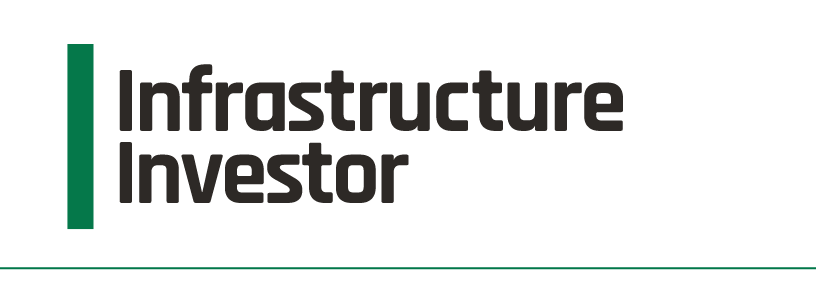The portfolio manager overseeing infrastructure investments for the Alaska Permanent Fund Corporation has questioned the benefit to LPs of seeing infrastructure GPs regularly team up together to secure large deals.
The Alaskan sovereign wealth fund is an LP in all of the previous vintages raised by high-profile infrastructure managers EQT, DigitalBridge, KKR, Stonepeak and Global Infrastructure Partners. With all of that quintet either now back in market with new flagships or preparing to do so, Ross Alexander, portfolio manager of private income at APFC – encompassing infrastructure and private credit – said the fund has the ability to re-invest in all of them but is unconvinced as to whether that’s the best move for the fund.
“We’ve seen a number of these funds club up on deals, and at that point, what’s the benefit to us as an LP in being in all the same funds if we’re getting exposure two or three different ways?” Alexander said, speaking to Infrastructure Investor.
“It’s causing us to step back and ask: who’s still got some differentiation or some edge we can execute on? Who is really doing something unique, if at all? With some of the larger funds, you end up with more beta and not really the ability to generate as much alpha. I think the mid-market funds and specialist funds have a little bit more ability to do something unique. That’s not to say the big funds don’t still provide value. We have the ability to back all of them. I don’t think it would be appropriate for us to allocate to several of these names that we used to, but it is a question we haven’t fully answered.”
Indeed, last year saw GIP and KKR complete their $15 billion acquisition of US-based data centre operator CyrusOne, before the pair teamed up together again to take an initial 32 percent stake in Vantage Towers from Vodafone, in a deal valued at €16 billion. Also last year, EQT and Stonepeak completed their acquisition of Dutch fibre operator DeltaFiber, while EQT and DigitalBridge own Zayo together from a 2020 transaction.
“I get the story of reducing competition for the deal by partnering with them instead of trying to squeeze out the last dollar, but why am I paying you both full fees? I might as well pick the one who’s going to offer me the lowest fees,” Alexander added.
Bite-sized infra
While Alexander and APFC are working on answering these questions, what will definitely change in this vintage of fundraising is the size of APFC’s commitments. Previously, the fund had committed $100 million to Stonepeak Infrastructure Fund IV, $250 million to KKR Global Infrastructure Investors IV and $500 million to Global infrastructure Partners IV.
Commitments in recent months have typically been $50 million, such as its February investment with EnCap Flatrock Midstream Fund V and $50 million each to Berkshire Digital Infrastructure Fund and North Haven Infrastructure Partners IV in December. A $107 million investment announced with Antin Infrastructure Partners V – a new GP relationship – slightly broke the mould, which Alexander attributes to APFC wanting to increase its European exposure.
“The fund is not growing at the trajectory it was. It’s also moderated our need to deploy. Having more options in the infrastructure market with specialist funds and a bigger universe, we can commit to a greater number of funds and do more in co-investments which means our cheque sizes come down,” explained Alexander.
“We’re still deploying roughly the same amount – around $500 million in infrastructure. The number of individual commitments we’ll do in a year has gone up, cheque sizes have gone down. I don’t see us going back to writing big cheques. It’s not a loss of confidence in any manager we’ve committed to; it’s an internal math problem we’re trying to solve.”
APFC’s private income bucket has a total allocation of 9 percent, for which infrastructure accounts for about 5 percent. Alexander said the plan is to keep this stable, saying that he doesn’t want to be committing over $1 billion annually to infrastructure as he feels the APFC would lose its edge in this way. He also has some concerns about the trajectory of valuations in parts of the market.
“Infrastructure talks about the inflation protection characteristics in these assets. It’s not homogenous across the board but by and large, that thesis has held up,” he stated. “With that said, we have hard time getting comfortable with some of the multiples in renewables and digital, the deals that are going more towards the core buyers. That’s not where we ever really looked to play, but we don’t see that becoming more attractive today than it was.”
APFC also this month confirmed a $50 million co-investment with KKR, aiding the GP in its recent investment in an LNG plant in Port Author, Texas with Sempra Energy, with the conventional energy space an attractive one to Alexander.
“We do see value and are more excited, partially because Alaska is an oil state and is in traditional energy sources, which are not off the table for us,” he said. “With renewed focus on energy security and supply, there’s a growing recognition of pragmatism of what is required for an energy transition long-term. I think there’s been a shift in people’s recognition back to natural gas being here for a while and will play a vital role in the energy transition. We’re optimistic about opportunities we’re seeing in the traditional energy space and how we can find value there where others can’t.”





